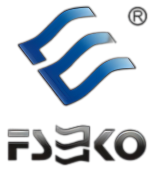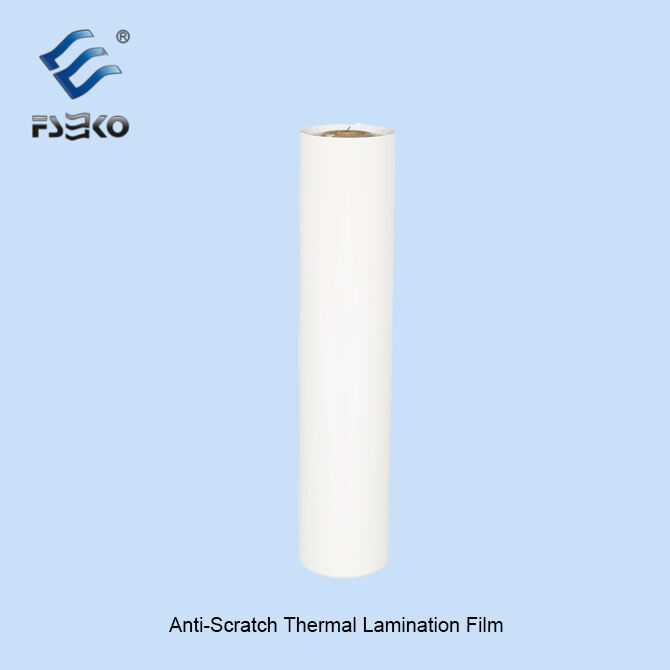فیلمی لایەنی دژە خرازەکان پۆلیمەرێکی تایبەتە کە بۆ پاراستنی ڕووکان لە بەرکەوتنی میکانیکی، ئەزموونی کیمیاوی و سروشتی هەڵوەشێنراوە، هەروەها دەربڕینی ڕوونییەکان دەخەینەوە. ئەم فیلمە لە بواری ئەلیکترۆنیک، ئۆتۆمبێل و بەکارهێنانی سەرەکییەکاندا بەردەوام دەبێتە هۆی ئەنجامدانی زانستی ماددە و مەسەریەتی بە دقت بۆ دروستکردنی بەرەکەیەکی بەرگەر و ڕوون.
سێ ماددەی سەرەکی بازارەکە دەگرێنەوە:
- پۆلی ئێتیلین (PE) : نەرمییەکی باڵا پێشکەش دەکات بەڵام پێویستە بەکارهێنانی زۆرترێک (¥100µm) بۆ هاوشێوەبوون لەگەڵ دژە خرازی ماددەکانی تر
- پۆلی پرۆپیلین (PP) : هاوشێوەیی دژە کیمیاکان و 92% دەربڕینی ڕووناکی دەکەوێتەوە
- پۆلی ئێستەر (PET) : باشترین کارکردنی لە گروپەکە دەکەوێتەوە لەگەڵ 500+ کردنەوەی تابەر لە شوێنێک دەبەزێتەوە بە تەنها 50µm شوێن
لەکۆڵینەوەی فیلمەکە دابەزینی زەردی لەژێر دەری خۆر دەگرێتەوە، کە ئەمەش دەیکات بۆ ئۆتۆمبێلەکان و ئامێرە سەر ئاسمانییەکان بەسوود بێت. لەگەڵ ئەوەشدا، لە تۆماری ساڵانەدا دەرکەوتووە کە چارەسەرەکانی دژە خراپکردن دەتوانن جیهانی کاری ئەلیکترۆنیکی مامۆستاکان ٢ تا ٣ ساڵ زیاد بکەن و هەروەها هەتا ٤٠٪ لە هەڵوێشتنی خەرجیەکان کەم بکەن.
بەکارهێنانی سەرەکی لە صنایعە ئەلیکترۆنییەکان و ئۆتۆمبێلییەکان
پاراستنی دیسپلەکان و تەختە نووسینەکان لە ئەلیکترۆنیکی مامۆستاکان
فیلمی لایەنی دژە خراپکردن گەردوونێکی ١٢.٨ میلیار دۆلاری لە ساڵانە دەخەرجی گۆڕینی دیسپلەکان دەپارێزێت کە لە تەلەفۆنەکانی هەڵگرتنەوە، تابلەتەکان و وەشانە پەیوەندیدارەکان پێکدێت. ئەم فیلمانە دەتوانن ٩H سختییەکانی قەلەم (دەگونجێتە گەردوونی شیشەی سەختکراو) دەوەستنەوە و هەروەها کەمتر لە ٠.٥٪ شۆری دەگەڕێنەوە دوای ١,٠٠٠ دانە ڕوو لەدەست دا. ڕاپۆرتێکی پارێزگاری ئەلیکترۆنیکی مامۆستاکان لە ٢٠٢٤ دەرکەوت کە ٧٦٪ لە بەرهەمھێنەرەکانی ئامێرەکان ئێستا دژە خراپبوونەوە هەمان گرنگییان دەدەن وەکوو گرینگییەکانی دەستنیشانکردنی دیجیتاڵی.
زیادکردنی بەدەنگی لە کۆمپۆنەنتەکانی دەروونی و دەرەوەی ئۆتۆمبێلەکان
بۆچوونەکانی ئۆتۆمبێل پێویستیان بە ئەو فیلمانە دەکەوێت کە دەتوانن 500+ کاتژمێر دوورخەرەبەتی UV-یان بەردەوام بکەن و دەگۆڕێتی ناوەندی زەردی کەمتر لە 2%. فیلمەکانی ناوچە داخەڵی دیاریکردنەکانی تۆچسکرینی زۆر بەهێز و تریمەکانی پیانۆ-بەری سیاه دەپارێزن، لەکاتێکدا بەکارهێنانە دەرەکییەکان لەبردنەوەی بنکە دەریادانی خێرای دا دەخەین کە فیلمەکان لەگەڵ ئەبڕازیفەکانی دەستبەرکردنی ئۆتۆمبێل لە 60–80 psi-یان دەبەزەن.
مەکتوبی باسکردن: کارایی فیلمی دژە خراپکردن لە ئینتەرفەیسەکانی داشبۆردی ئێلیکتریکی
لە ساڵی 2024 دوای ئەزمونێکی میدیایی لە 15,000 داشبۆردی ئێلیکتریکی ئەزمونی فیلمە دژە خراپکردنەکانی PET ئەنجام درا. دوای 18 مانگ:
- 92% لە فیلمەکاندا هیچ خراپکردنێک لە بەرەی 1,000 لوکس دیار نەبوو
- نەخشەی دروستی بەردەوام بوو بە درێژایی 89 GU لە دژی 67 GU بۆ پۆلیکەربۆناتی بێ پوشە
- تەواوی ئەزموونی هاپتیک 18% باشتر بوو بەهۆی دروستی ڕووکەشی
پۆڕستنی مواد: پۆلی ئێتیلین، پۆلی پرۆپیلین و پۆلی ئێستەر (PET)
هەڵبژاردنی موادی باشترین پێویستە بە تێلەکەوتنەوەی نەرمی، بەردەوامی و نرخی گرێبەستدار لەسەر سێ پۆلیمەری سەرەکی.
فیلمەکانی پۆلی ئێتیلین: تێلەکەوتنەوەی نەرمی و دژە خراپکردن
فیلمەکانی پۆلی ئێتیلین دابەزین و شێوەگۆڕانیان زۆرتر دەکەن، بۆیە بۆ شێوەکانی ناھێڵی باشترن. پۆلی ئێتیلینی چڕی کەم (LDPE) 85% درێژبوونی لە بەرکەوتن دەکەوێت، بەڵام ساختەکەی نرم سەرەتە دەبێتە هۆی کەمبوونی دووری لە خراپبوون. پۆلی ئێتیلینی چڕی بەرز (HDPE) 40% زیادکردنی دوایی لە سطح دەکەوێت بەهۆی هاوشێوەبوونی مۆلیکولی زۆرتر.
پۆلی پرۆڤیلین: رونی و دووری لە کیمیاوی بۆ بەکارھێنانی ناوەڕاست
پۆلی پرۆڤیلین لە نێوان رونی دیدەیی (92% گەشەی دیمەنی) و چاکی کیمیاویدا تەنگەڵ دەکەوێت. تاقیکردنەوەکانی ئازاد تۆمارکردنی 500+ کاتژمێر لە بەرەو زەیت و دۆخە کیمیاویەکان بێ ئەوەی کەوێتەوە دەکەنەوە.
پۆلی ئێستەر (PET) وەکوو چەکی سێفیل بۆ لایەنی دوورکەوتنی سەرەکی
فیلمەکانی PET لە بەکارھێنانی باڵا سەرکردەیەکن لەگەڵ 9H نمرەی سەختییەکان و 98% چاکی UV لە ماوەی 5,000 کاتژمێر. ساختەی نیوکریستالی ئەوانە 600+ گرام لە مەتری دووری لە خراپبوون دەکەوێت - سێجارە زۆرتر لە فیلمەکانی PE.
توێژینەوەی تاقیکردنەوە و ئەنجامەکانی بەکارھێنانی راستەقینە
تاقیکردنی قورسی: سختی مداد، سەرەڕایی کردنی تابەر و تاقیکردنی ڕەنگدانی دەست
فیلمە ئەنتیسکرەچیەکان سێ جۆر تاقیکردنی گرینگیان دەکرێت:
- سختی مداد (ASTM D3363) پێمانکردنی ڕووەکەی فیلم لە بەرامبەر سکرەچکردن
- سەرەڕایی کردنی تابەر (ISO 9352) پێمانکردنی ڕووەکەی تاواوی
- ڕەنگدانی دەست (AATCC 8) بڕی ڕەنگدانی دەست
دەرچوونی تاقیکردنەکان: سختی مدادی 9H و زیاتر لە 500 دووبارە لە تاقیکردنی تابەر
| تەست | سۆتیاری قورسی | کارایی فیلمی PET |
|---|---|---|
| Hişkbûna pencil | 4H | 9H |
| چەکی سەرەنجامی تابەر | 100 | 550 |
| دەرکردنی رەنگ | 50 | 200+ |
تاقیکردنی تنشی زیستەیی
لەبەر ئەو تاقیکردنەوە سازووکارییانە، فیلمەکان دواتر دەبێتە هەڵگری سیمولاسیۆنی کۆنبوونی خێرایانە، وەکوو ناساندنی UV، چاککردنی گەرمی، و تاقیکردنی بەردەوامی بەرامبەر شیلی. فیلمەکانی PET دوای هەڵگرتنی زۆر سەخت 98.2% شفافیەتی دەسڕێننەوە لە دژی 81.7% لە گۆڕانکارییەکانی پۆلی پرۆپلینی.
بەهێزکردن: درێژکردنەوەی عمری پرۆدەکت و پاراستنی دیزاین
فیلمی لاکەی ضد خرازەکان کارایی پرۆدەکتەکان دەبەزێنن لەبەر دروستکردنی بەرکە دیواری بەرامبەر خرازەکانی رۆژانە. لە ئامێرە ئەلیکترۆنییەکانی مامۆستا، ئەم تەکنۆلۆژیایە دەبەزێنێتەوە بەربڵاوبوونی خرازان لە سکرینی تەلەفۆنەکانی هووند 62% لە ماوەی 24 مانگ.
فایدەکانی سەرکەوتووبوونی سەرەکی دەگرێتەوە:
- دووری چاودێری: ¢1% زیادبوونی توندی دوای 1,000 کاتژمێر بەرگریکردن لە باران
- ڕەنگدانی ڕاستەقینەیی: دێلتا-ئی ¢0.8 دوای تاقیکردنەوەی لەناوچوون
- تەواوی ڕووکەشی: نەرمی Ra دوای 10 ساڵ کارکردنی داهێنراو دەکەوێتە خوارەوەی 2.2 ¼m
ئەم تایبەتمەندیانە داواکاران هەڵدەگرێت لەوەی سەرداڕێژکردنی گرانقیمت بکەن لە کاتێکدا داواکاران دەگەڕێنەوە - 58% لە خرێدەران دەڵێن لەناوچوون دەبێتە هۆی سەرەکی داگیرسازی ئامێرەکانیان.
پرسیارەکان و جووڵەکان پێکهاتوو
بەکارهێنانی سەرەکی فیلمی لاکێکردنی بەرگری لە لەناوچوون چییە؟
فیلمی لاکێکردنی بەرگری لە لەناوچوون سەرەتا بەکار دێت بۆ پاراستنی ڕووکەشەکان لە لەناوچوونی میکانیکی، گەردوونی کیمیاوی، و سروشتی توندوتیژی هەواوچاندن لە کاتێکدا توانای دیدنی خۆی دەگۆڕێت. بە کۆمەڵێک لە کاربەرییەکانی ئەلیکترۆنی، ئۆتۆمبێلی، و کاری ڕاکردندا بەکار دێت.
کەی materials بەکارهێنراوەکان بۆ فیلمەکانی لامینەییە ڕووکێشەنە؟
Materials بەکارهێنراوەکان Polyethylene (PE)، Polypropylene (PP)، و Polyester (PET) پێشکەش دەکەن هەریەک لە Flexibility، Chemical Resistance، و Abrasion Cycles دا.
کەی بەکارهێنانەکان زۆرترین فایدەیان لەم فیلمانە دەگرێت؟
ئەلیکترۆنیکی مەبەستی وەک Smartphone و Tablet لەم فیلمانە فایدە دەگرن، چونکە دەستکاری Replacement Cost گرانەکان دەخەینەوە. هەروەها Components داکۆکی و دەرەکی خۆمەوەییش لە Durability و Aesthetic Protection زۆد دەکرێتەوە.


